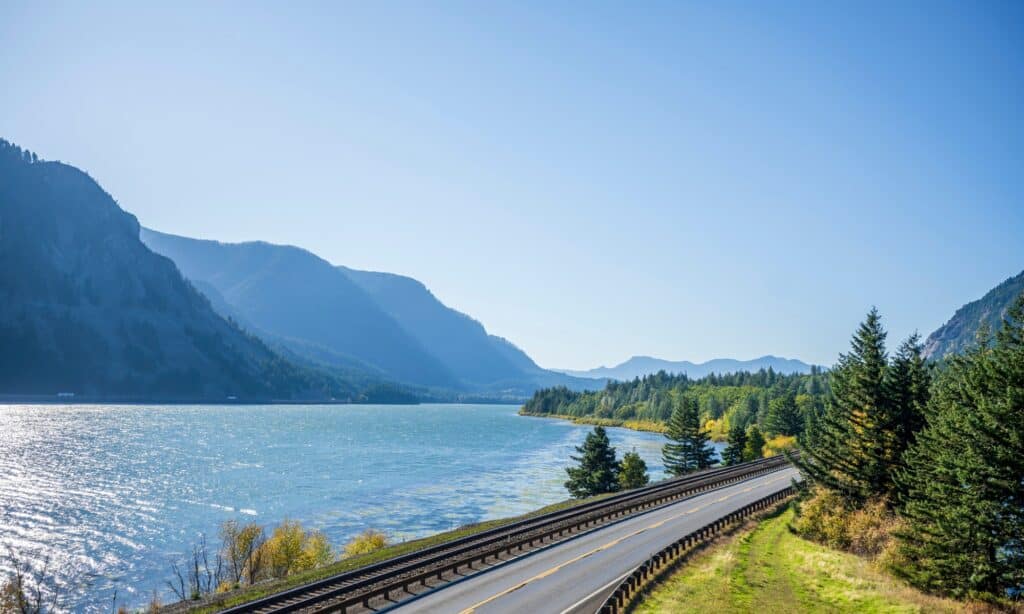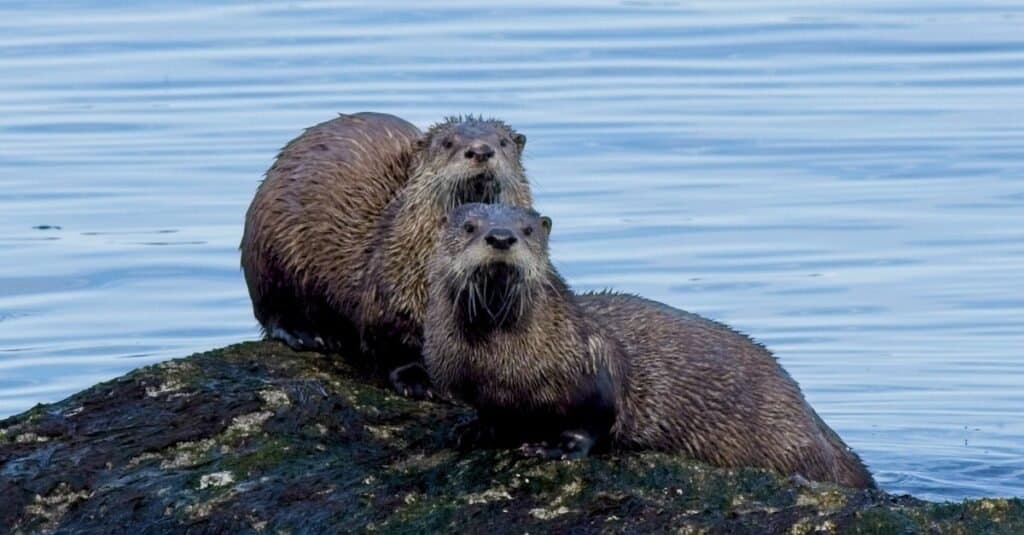The Columbia River is the largest river flowing into the Pacific Ocean from North America. Interestingly, this gigantic river holds about a third of the potential hydropower of the United States. Actually, in the river behind Grand Coulee Dam, there are 33 fully functioning hydroelectric generators. In total, the Columbia River is home to 14 large dams. The Columbia River basin, which covers 260,000 square miles of territory across 7 states and one Canadian province, is also a valuable resource for agriculture, commercial fisheries, recreation, and forestry in the Pacific Northwest.
Read on to learn exactly where the Columbia River starts and more facts about this massive body of water.
Where Does the Columbia River Start?

The Columbia River starts at Columbia Lake.
©iStock.com/JPLDesigns
The Columbia River starts at Columbia Lake, which sits at an elevation of 2,700 feet (820 meters). Columbia Lake is located in British Columbia near the crest of the Rocky Mountains.
While this massive river starts at Columbia Lake, it does not end there. Neither do all of its water sources come from the lake. Ten principal tributaries feed the Columbia River, some of them being the Snake (1,078 miles long), the Kootenai (485 miles), the Deschutes (252 miles), the Yakima (214 miles), and Willamette (187 miles). Other tributaries include the Flathead, Pend Oreille, and Clark’s Fork. Tributaries are freshwater streams that flow into a larger body of water, like a river. During the river’s first 190 miles (305 km), its course is northwesterly, but it quickly branches off.
To be more specific about the river’s location, the latitude at the mouth of the Columbia River is 46°15′ N, and the approximate longitude is 124°05′ W.
Where Does the Columbia River Flow Through?
The Columbia River flows from its starting point in the Rocky Mountains of British Columbia, Canada northward for 200 miles, before changing its direction southward for about 270 miles. At that point, it hits the border of Washington state, 749 miles inland. When it crosses into Washington, the Columbia River meanders south, then west, then south again, while picking up more water fed to it from the tributaries in the Columbia River Basin. Once the river hits the border of Oregon, it travels west to form a natural and breathtaking border between Washington and the state of Oregon. The Columbia River finally empties into the Pacific Ocean and is known for draining the most water into the Pacific Ocean of any river in North or South America
The states which are touched either by the Columbia River or the tributaries in the Columbia River Basin are Oregon, Washington, Idaho, Montana, Nevada, Wyoming, and Utah. Scientists predict that the river is at least 17 million years old.
How Long is the Columbia River?

The Columbia River is 1,243 miles long.
©iStock.com/vitpho
The Columbia River is about 1,243 miles long, starting from its headwaters to its mouth at the Pacific Ocean. Nearly half of the river’s course is in Canada. Not only is this river long, but it is deep! Experts have measured depths up to 400 feet near Portland, Oregon, and depths of 1,000 feet at Wallula Gap, south of where the Columbia and Walla Walla rivers merge.
Where Does the Columbia River End?
Every river has a beginning and an end, the Columbia River included. The end of the Columbia River is just west of Astoria, Oregon, where the river empties into the Pacific Ocean over the Columbia Bar.
The Columbia Bar is a shifting sandbar at the river’s mouth which has a reputation for being extremely dangerous to navigate. The biggest hazard that occurs from the shallow waters of the river converging with the deep currents of the ocean is that many boats capsize. This has resulted in countless vessels sinking, as well as lives being lost, and has rightfully earned the Columbia Bar the nickname “Graveyard of the Pacific.”
How Wide is the Columbia River?

The widest point on the Columbia River is 2,640 feet.
©iStock.com/Chaitra Kukanur
The Columbia River is a wide river, depending on what part you are looking at. For example, the widest point on the Columbia River is 2,640 feet, but in some parts, the width of the Columbia River is just a few feet!
If you plan on enjoying a beautiful day on the Columbia River in a boat, make sure to ask your local and state parks about sizing restrictions since some streams connecting to the riverways are shallow and thin.
Is the Columbia River Safe to Travel?
Has the beauty of the Columbia River taken your breath away? Are you ready to plan your next vacation near these waters? First, consider that both private and public land surrounds the Columbia River. The Columbia River is also massive, covering Oregon, Washington, and British Columbia. This allows visitors to have many traveling options.
Swimmers will be happy to know that the Columbia River is generally safe to swim. However, there are some parts of the river surrounded by toxic chemicals and bacteria. A notably contaminated area of the Columbia River is the Columbia Basin, which is home to hundreds of contaminated waste sites.
Surrounding the Columbia River is one of the most polluted places in the Western Hemisphere: the Hanford Nuclear Reservation. Scientists have studied the soil, water, and air in the Hanford Nuclear Reservation’s surrounding areas, and the results conclude animals like fish, otters, and bald eagles are affected by the toxins in the water and soil. The toxins lead to algae blooms that kill water life. In the 1950s, reactors dumped a daily average of 50,000 curies of radioactive material into the water.
Some good news on that front: the EPA has just announced that the Biden Administration will invest $79 million into restoring and protecting the Columbia River Basin. The goal of these funds will be to aid in reducing toxins in fish and water, as well as addressing the impacts of climate change on the basin.
What Animals Can You Find in the Columbia River?

North American river otters are common in the Columbia River and feed on the massive fish population.
©iStock.com/pr2is
There is some spectacular wildlife surrounding the Columbia River that can make your jaw drop. Since the Columbia River stretches past seven states and is a small region in Canada, the environments are distinctly different. However, in most Columbia River sites, the area surrounding the river is dense woods and forests where black bears are common. Large mammals living in the mountains, like bobcats, frequently drink water and bathe in the Columbia River. In many parts of Mount St. Helen, you can also spot wolves.
The Columbia River is also rich in fish. Just a few inches or feet below the surface of the water, you can find wild salmon, rainbow trout, steelheads, North American river otters, and, less commonly, smallmouth bass. While smallmouth bass is not the most common fish in the Columbia River, there are countless competitions yearly in the Dalles, Mt. Hood, and the Columbia River Gorge.
The photo featured at the top of this post is © iStock.com/vitpho
Thank you for reading! Have some feedback for us? Contact the AZ Animals editorial team.






